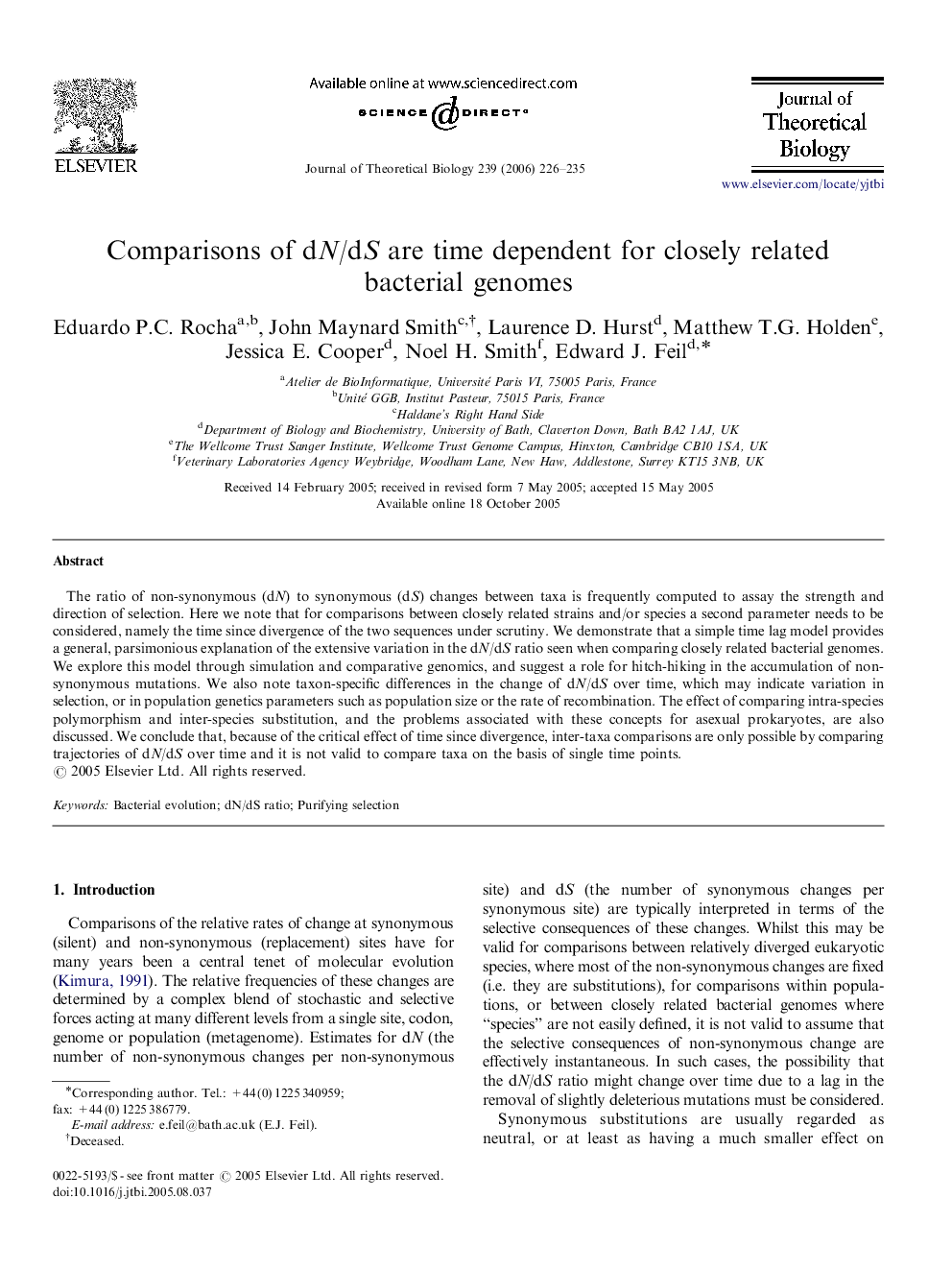| Article ID | Journal | Published Year | Pages | File Type |
|---|---|---|---|---|
| 4499695 | Journal of Theoretical Biology | 2006 | 10 Pages |
The ratio of non-synonymous (dN) to synonymous (dS) changes between taxa is frequently computed to assay the strength and direction of selection. Here we note that for comparisons between closely related strains and/or species a second parameter needs to be considered, namely the time since divergence of the two sequences under scrutiny. We demonstrate that a simple time lag model provides a general, parsimonious explanation of the extensive variation in the dN/dS ratio seen when comparing closely related bacterial genomes. We explore this model through simulation and comparative genomics, and suggest a role for hitch-hiking in the accumulation of non-synonymous mutations. We also note taxon-specific differences in the change of dN/dS over time, which may indicate variation in selection, or in population genetics parameters such as population size or the rate of recombination. The effect of comparing intra-species polymorphism and inter-species substitution, and the problems associated with these concepts for asexual prokaryotes, are also discussed. We conclude that, because of the critical effect of time since divergence, inter-taxa comparisons are only possible by comparing trajectories of dN/dS over time and it is not valid to compare taxa on the basis of single time points.
